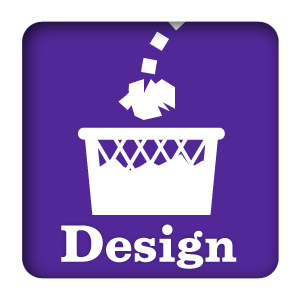Apple’s Eddie Cue made some interesting statements about what he sees ahead for Apple’s TV plans. The quote that’s getting the most publicity is a statement that Cue doesn’t like the so-called ‘skinny bundle.’ Along with the recent inclusion of Sling TV and other streaming packages on the Apple TV, that meshes with what had come down the rumor pipe a few months ago — Apple has put their plans for a streaming TV package on hold.
Although there is no product I would more like to see from Apple, I think this is a good move. The product Apple seemed to be veering towards was feeling a lot like a standard Cable TV situation, with bundled channels. Essentially, instead of paying a cable company for their channels, the public was going to pay Apple — and that’s not a breakthrough product.
Now we’re back at the beginning, with no prospective Apple TV streaming service in the near future. So, given a “start from square one” approach, what would the best TV product & service look like?
A Whale with a Tractor for a Hat!
First, what do we want from TV? What is the essential thing we’re looking for when we shackle ourselves to Cable? The easy answer is “Entertainment.” But that’s a broad answer. We can be entertained by a whole lot of things that don’t have anything to do with a TV screen. What type of entertainment are we looking for?
I’d say that we’re looking for passive, produced entertainment. That is to say, we want a non-interactive experience, because once we choose something, we sit and watch. And that’s a key word as well, a word that’s used but become invisible from over-use: “Watch.” We use our eyes and watch. We are spectators only, and we like it that way.
We also want produced entertainment. By using the word “Produced” it means that we just don’t want to get raw, unfiltered pictures and sound, we want it all to amount to something. We want something to be focused on a topic. We want to see that topic developed. We want a story.
We thrive on stories. As a people, heck, as a race, we live through stories. We are addicts to storytelling. When we sit down in front of a TV, we want someone to tell us a story. Sometimes we want a 2-hour story. Sometimes we just want to see someone kicked in the nuts. Our culture and our minds are based around stories, and we are addicted to anything that can give us more.
Therefore, the ideal TV service should be a story-delivery machine beyond compare.
Shush, Momma’s Watchin’ Her Stories
But here’s the problem. Stories of the variety we want from TV are held in the hands of middlemen. We call them TV networks. TV Networks don’t develop a lot of their own programming by themselves. They pick from a list of prospective TV projects and then fund them for an episode or two to get a look at it. They then decide what worked for them and their advertisers and evaluate. Will they further develop a project, go with what they have — or most often, drop it altogether?
Over the years, however, TV programming became a zero-sum game. It didn’t produce entertainment people really liked on it’s own terms, so much as they liked it better than what was on another network at that same time. That was the way TV worked through the 1990’s, and explains “My Mother, The Car,” “BJ and the Bear” and “Manimal.”
Yet, even as TV Broadcast Networks were challenged by Cable TV Networks, the middlemen kept their stranglehold. To keep themselves alive, TV Networks diversified and became entertainment conglomerates. They merged with movie studios and other large entertainment companies. Now we have behemoths like Comcast and Viacom that control several channels, and have done so for nearly 25 years now. But this bundled strategy only works when there is no way around the cable box for TV entertainment.
That strategy is now in the midst of collapse. With streaming internet video, the Network TV game-plan is falling apart. With YouTube and similar services able to provide the exact same entertainment people want from TV without the involvement of the networks — and in a lot of cases provide better entertainment — it no longer makes a lick of sense to sign up these same conglomerates and create “Bundled TV 2.0” when it comes to an Apple Streaming TV Service.
What makes more sense is to let the shows find their own way to the screen. You need a way around the middlemen.
You’re Free Now, Storage Wars
Today, when we sit down to watch TV, we tend to watch “whatever’s on.” What we’d like to see, though, is our favorite programs on our own terms. Even with a broad variety of on-demand offerings, most TV Networks do not provide all their programs or all episodes of any given program. They function more as a catch-up on missed episodes or as starters to get into a series. It’s disjointed and provides a poor viewing experience. If you want the complete series or season, they’ll ask you to plunk down $30-40 on iTunes. For a really good series, that makes sense. For a reality show, it certainly doesn’t.
Up until now, cost hasn’t mattered so much, as we’ve paid one fee for TV access. An hour of fifty-year-old sit-com re-runs cost us the same as an hour of first-run premium drama. We’ve never really valued one program over another — until we had to pay for a single episode, and now the value of a show becomes a little more important to us.
Once, we loved the idea of spending forty dollars a month to get 60 channels. We were overjoyed when we could get 225 channels. Now, because we have a sense of value regarding TV entertainment, we want to know exactly what we’re getting from each channel, and we don’t want the crap ones. In addition, we’re interested in getting the newest programs that all our friends are watching, and those networks that can provide new, original programming are the most valuable ones.
But what are we getting that’s new on a Cable TV Channel? How much content is actually being produced? For many networks, they may produce less than an hour of new programming on any given week. Some never produce original programming at all. Even for those that do, the vast majority of new programming is live event material, like news, talk shows and sports events. Even cheap reality shows can be sparse, often premiering new shows once every two weeks or more.
Put another way, the programming offered through most Cable channels are repeats. The most watched Cable TV Network in America is the USA Network. They typically show 23 hours of repeats on any given broadcast day.
Quiet, I’ve Only Seen This Episode of NCIS Three Times
In a world made up of computers, broadband internet and mass storage, it is becoming more and more ridiculous to pay money for random repeats. After all, TV shows have become files on a hard drive, and paying any sum of money for old files of movies and TV shows seen hundreds of times before is no longer novel or compelling — especially when we can’t control when they come on. With little difficulty, a viewer can go get copies of those shows if they truly wanted to watch them. When faced with a choice between paying eighty bucks for 225 channels full of shows they will never watch or have already watched, they will download their TV for less, rather than watch a scheduled broadcast.
That’s where a viewer becomes a user. It’s when a TV viewer no longer watches “whatever’s on” and wants to treat entertainment like they treat music, games, web pages and documents. They want the files. They use the TV, not just watch it.
The bubble is bursting for Cable TV, as establishing an entire 24-hour network to broadcast just a handful of hours of new programming a week seems almost obscenely extravagant and needlessly redundant.
In this environment, the whole nature of TV changes. We can dispense with a network, because we no longer need their delivery system of antennas, satellites or coaxial cables. The content becomes the driver of the experience, with the viewer making choices based on their tastes instead of relying on the tastes or business needs of those who run the delivery system.
But if this is true, why isn’t it happening already?
What stands in the way of this kind of future is the non-trivial fact that TV shows are expensive to produce. When you start making a TV show, you need initial up-front pre-production costs covered, then money for each episode.
I’ve been following the Mystery Science Theater 3000 Kickstarter, and even for such an inexpensively-produced show, they need an initial investment of approximately $550,000 for startup costs and then $250K per show. You can imagine what the costs for a prime-time drama are. To meet those kinds of expenses, you need the money of a network, and even more importantly, you need the network to assume the risk, should the show not work out.
What we lack is an established method of venture capitalism for television. Venture capitalists have been developing ideas for a long time, providing the up-front money for software and/or services in the tech world. In television, you need to develop the same kind of ecosystem. Finding backers has been essential in stage performance for centuries now, and there’s no good reason why it can’t happen for TV.
Still, as long as big TV networks exist, and can take on all the risk, we won’t see a lot of progress. Individual investors take on too much risk, while networks can mitigate that same risk, so networks will continue to be the best funding option.
We could wait for the dam to break, and for cracks to appear in the big TV networks, but the better approach would be to help create this new TV environment and show the way. In fact, it would be smart to just drop the term “TV” altogether and call them serials. The smartest thing Apple could do now would be to start investing in individual productions of new serial dramas, with an eye towards bringing new stories of high quality into existence. They don’t need to be exclusives, either. Just promoting a new VC method of serial development would be the aim. With a thriving industry of independent production going, Apple would stand to benefit. People would be spending their idle time on Apple devices, not on other companies’ TV sets.
So Why Are You Still Writing? Why Isn’t This Article Over?
This strategy only really applies to a particular part of the traditional TV experience: scripted shows. There are, essentially, four types of television programs: Movies, Scripted Shows, Events and Reality TV.
Movies: Movies still make up a lot of the bulk of programming for cable channels, and they’re the a la carte programming option of choice for a lot of people.
Scripted Shows: These are serialized TV shows, from sit-coms to miniseries. I’m calling them “scripted” to differentiate these from reality programming.
Events: This covers live or “plausibly live” shows like news, talk shows and sports programming.
Reality TV: The crown jewel of human achievement. Even though most reality shows are scripted, they are intended to be perceived as unscripted. We’ll also put documentary-like shows in this category as well, which is anything from Hitler documentaries to video cam shows.
What About Those Sketchy Dudes Who Sell Knives?
So with a VC structure to develop serials, and movies developed in the traditional way, and delivered through iTunes, that leaves Reality and Events. Reality shows are not worth getting worked up about. They can live or die on their own merits. Events are the last, and most important component. Conversely, the live part of the Apple TV puzzle is the hardest to solve, especially when it comes to sports.
As long as networks are still willing to shell out insane numbers to get live sports broadcasts, much like the current environment for making serials, any given sports league will resist the idea of striking out on their own, because that involves a whole lot of risk that the networks are willing to absorb. Also, in most cases, TV Networks are vastly overpaying for sports.
The reason that TV Networks spend so much on sports is due to advertising. Sports still deliver the biggest audiences, far more than any other type of programming. Even if spending a billion dollars on a sport for a season only gets you 500 million in advertising, the average rating score for your whole network goes up, and you can charge more for ads in all of your programs. You can also charge cable companies more to carry your content.
So when it comes to sports, if you want that audience, you will have to go out and buy it. If Apple wants a spike in headlines and a jolt of Apple TV sales, they can go out and snatch a contract with the NFL or go with international soccer or F1. However, these options have been on the table for a while, and Apple hasn’t used them. More likely, Apple would rather partner with established sports outlets like ESPN and bring their content to the Apple TV.
The problem with this solution is that live sports is the one driving force in television viewership, and by extension, the biggest driving force for anyone trying to establish a streaming living room experience. If you want to have an app for NFL games or soccer or any other established sport, you can’t do it if TV networks keep tying up the rights. While the excellent MLB app does an amazing job for baseball, the NFL app delivers clips of talk shows. To get sports off of the networks, and bring it to streaming, money will have to be spent. Fortunately, there is also a lot of profit to be made here, and once sports networks get a taste of a strong user base directly subscribing to their content, they will be streaming for good. They just need to be show that it can work.
That’s what this all comes down to. Implementation. Lately, Apple has not been the best at implementing the many things they do. Newsstand, HomeKit, CarPlay and even the iPad Pro Pencil all come immediately to mind. If the Apple TV and a streaming content service is going to work, Apple will need to implement content delivery themselves. They don’t have to be in it for the long run, but they do need to get it started and then let momentum take it the rest of the way.
In terms of strategy, this is also the way to get TV networks to release their stranglehold on serials. Once they no longer have the crutch of sports viewership to lean on, they’ll have to start developing better programs and come on board with downloaded serials to save what they can of their business.
Then What?
Then we dispense with the idea of “channels” and “networks.” They become subscriptions. A network will offer a subscription package for it’s programs, but not for it’s channels. You won’t stream TBS or MTV, you’ll subscribe to a show or bundle of shows. You might see a situation where a hit show is offered at $19.99 per season and for $29.99 you get some extra shows that are also looking for an audience. You’d get a free preview episode, or a ‘first five minutes free’ kind of offer.
At that point, networks and studios merge, and even the idea of streaming TV shows starts to fade. Streaming will be the domain of sports, news and events, and you’ll subscribe to them directly instead of paying the middlemen.
That’s where all this is ultimately going, but we may need to give it some time. Time for the entertainment conglomerates behind the networks to realize that they need to give up their broadcasting assets and turn themselves into investors, following the same model that has proven so profitable for apps.
So what your TV experience will look like in the future is what Eddy Cue described in the article. You’ll ask your TV for shows and/or have them already picked for you. The tech is already there. The ideal story delivery machine is already in most people’s homes or on their phones. It’s the content that needs to make the leap into the unknown, and that may also involve a push. Apple’s prepared for the leap, but are they prepared to push? Are they prepared to invest?










